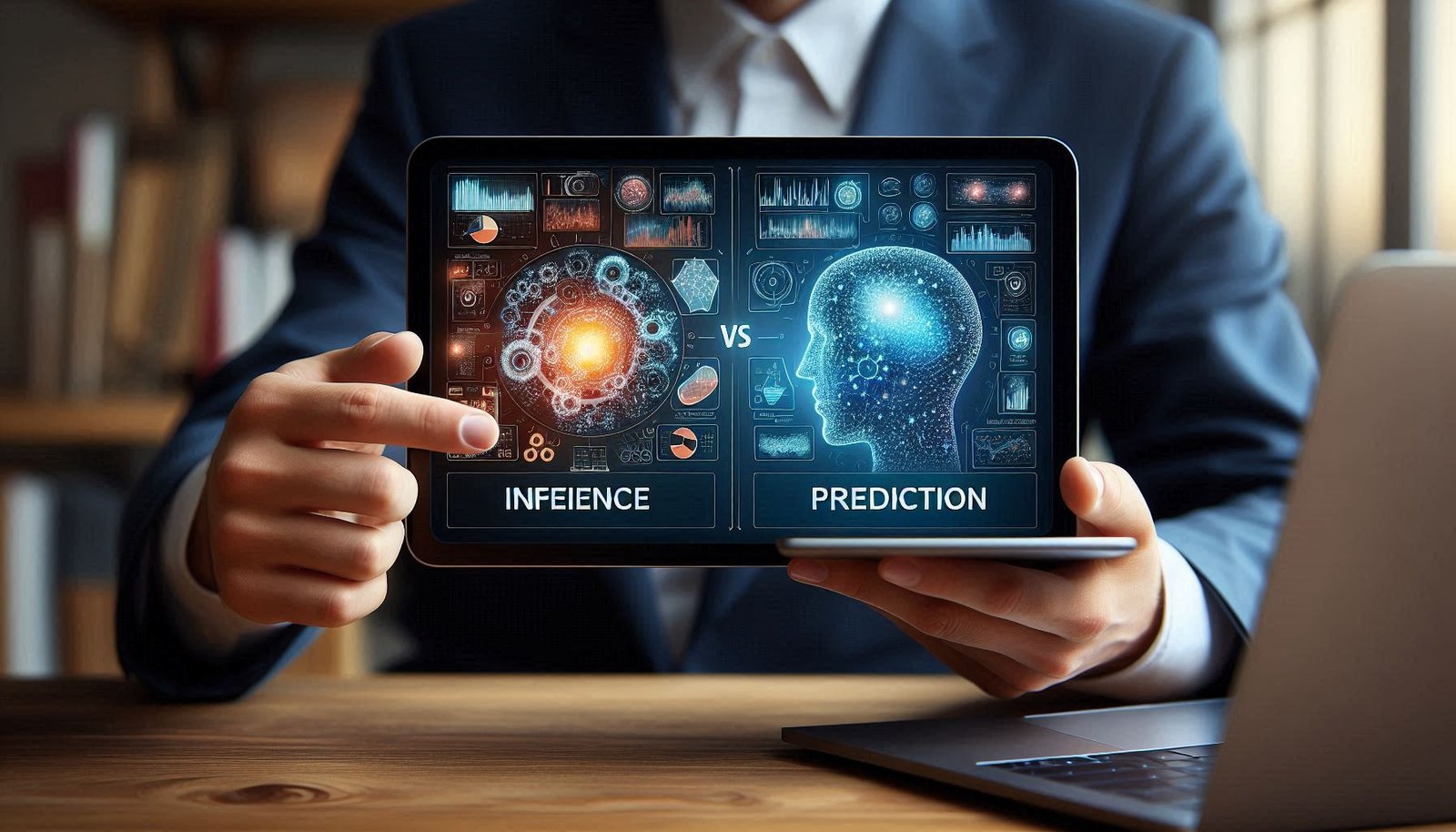In the context of machine learning the words ‘inference’ and ‘prediction’ are sometimes used interchangeably. But they are derived with different meanings and they mean different things. It is important for anyone who works with machine learning models – as a student, a developer, or a business professional.
In this post, I will clarify the distinctions between Machine Learning Inference vs Prediction as they apply to the model training, in plain speak, with clear sub-headings, and, will make sense through real world examples.

What Is Machine Learning
Machine learning is a form of artificial intelligence in which computers learn from data. Rather than being given explicit instructions,” the machine decides for itself what to do or predict, based on the data.
A machine learning workflow has three main stages:
-
Training
-
Inference
Let us explore what each means and how they relate.
What Is Inference in Machine Learning
Inference: Predictions and Model Outputs in machine learning Inference in machine learning is the process of exercising the predictions or outputs of a model using new, unseen data. It does not involve any learning or updating of the model. The model simply applies what it has already learned during training.

Key characteristics of inference
-
It occurs after training.
-
It is the stage where the model is deployed to solve real-world problems.
-
It is used in real-time applications like fraud detection or speech recognition.
-
The model does not learn during inference; it only uses knowledge gained during training.
Example of inference
A smartphone’s face recognition feature uses a trained model to decide whether your face matches the stored data. This process of decision-making is inference.
What Is Prediction in Machine Learning
Prediction is the result or output produced by the model during inference. When you input new data into the trained model, it produces a prediction.
Key characteristics of prediction
-
It is the final output of inference.
-
It can be a number (such as house price) or a category (such as “spam” or “not spam”).
-
It is what users or applications typically care about.
Example of prediction
A recommendation system on a shopping website predicts that you might like a certain product. That suggested product is the prediction.
Key Differences Between Inference and Prediction
| Aspect | Inference | Prediction |
|---|---|---|
| Definition | Process of applying a trained model | Output produced by the model |
| Purpose | Use model to analyze or make decisions | Give a result from new data |
| Timing | Happens during deployment | Happens as a result of inference |
| Example | Using a model to evaluate loan applications | Outputting “approved” or “rejected” |
Inference vs Training
Training and inference are two separate phases in a machine learning workflow.
| Feature | Training | Inference |
|---|---|---|
| Purpose | Teach the model using data | Use the trained model to make decisions |
| Requires labels | Yes | Often no |
| Resource usage | High (CPU or GPU-intensive) | Low to moderate |
| Time | Slower | Faster |
| Changes the model | Yes | No |
Predictive vs Inferential Models
Some models are built to make accurate predictions. Others are built to help understand relationships in data.
| Type of Model | Predictive Model | Inferential Model |
|---|---|---|
| Goal | Forecast future values or classifications | Understand the relationship between factors |
| Example | Predict next month’s sales | Determine if advertising affects sales |
| Use Case | Business forecasting, stock price prediction | Academic research, causal analysis |
Descriptive vs Predictive Models in Machine Learning
Descriptive and predictive models serve different goals.
| Type | Descriptive Models | Predictive Models |
|---|---|---|
| Goal | Understand and summarize past data | Forecast future outcomes |
| Output | Insights, patterns | Probabilities, values, or categories |
| Example | What were the top-selling products last year | What products will be popular next month |
Linear Regression: Prediction vs Inference
Linear regression can be used for both predicting outcomes and interpreting relationships.
| Purpose | Prediction | Inference |
|---|---|---|
| Goal | Forecast future values | Understand relationships between variables |
| Use | Estimate unknown outcomes | Analyze the impact of each variable |
| Example | Predict house prices | Determine how square footage affects price |
Causal Inference vs Prediction
Causal inference goes beyond simple prediction. It tries to answer “what if” questions and determine the cause of outcomes.
| Feature | Causal Inference | Prediction |
|---|---|---|
| Goal | Understand what causes what | Accurately forecast outcomes |
| Requires experimentation | Often yes | Not required |
| Example | Does exercise reduce disease risk | Will a person get sick next week |
Observation vs Inference vs Prediction
These terms are often used in science and machine learning.
-
Observation: What you directly see or measure.
-
Inference: A conclusion based on observations or data.
-
Prediction: A statement about what will happen in the future.
Example
-
Observation: The sky is dark.
-
Inference: It looks like it might rain.
-
Prediction: It will rain in the next hour.
Common Questions Answered
What is the distinction between prediction and inference?
Inference is the process; prediction is the result of that process.
Is a hypothesis a prediction or inference?
A hypothesis is a prediction that can be tested. It is often based on inferences drawn from observations.
Is machine learning causal inference?
Not always. Traditional machine learning focuses on prediction, not causation. Causal inference requires specialized techniques.
What is the difference between predictive and descriptive models?
Predictive models forecast outcomes. Descriptive models summarize and explain data without forecasting.
What is the difference between assume and predict?
-
Assume: Accept something as true without proof.
-
Predict: Estimate what will happen based on data or evidence.
Real-Life Examples
| Scenario | Type |
|---|---|
| A student estimating exam results | Prediction |
| A doctor diagnosing based on symptoms | Inference (leading to a prediction) |
| A scientist testing if a drug reduces fever | Causal Inference |
| Reading a weather report | Observation |
| Guessing someone’s mood from their tone | Inference |
Conclusion
Understanding the differences between inference and prediction is key in machine learning. Inference is the process of applying a trained model to new data, while prediction is the outcome of that process. These terms also relate to broader ideas like causal inference, statistical modeling, and data interpretation.
Whether you are investigating a business problem or constructing a model, understanding when to employ inference and prediction, and how to do so, enables you to make better choices and design more powerful solutions.
[…] this: Which ML Algorithm is Best for Prediction? In this article we will discuss the top popular machine learning algorithms for prediction, real life examples, how to choose the right algorithm, frequently […]
[…] on the other hand enables systems to process huge amounts of data, recognize patterns in it and predict the outcomes. The potential applications are vast, for instance, predicting demand in retail to […]